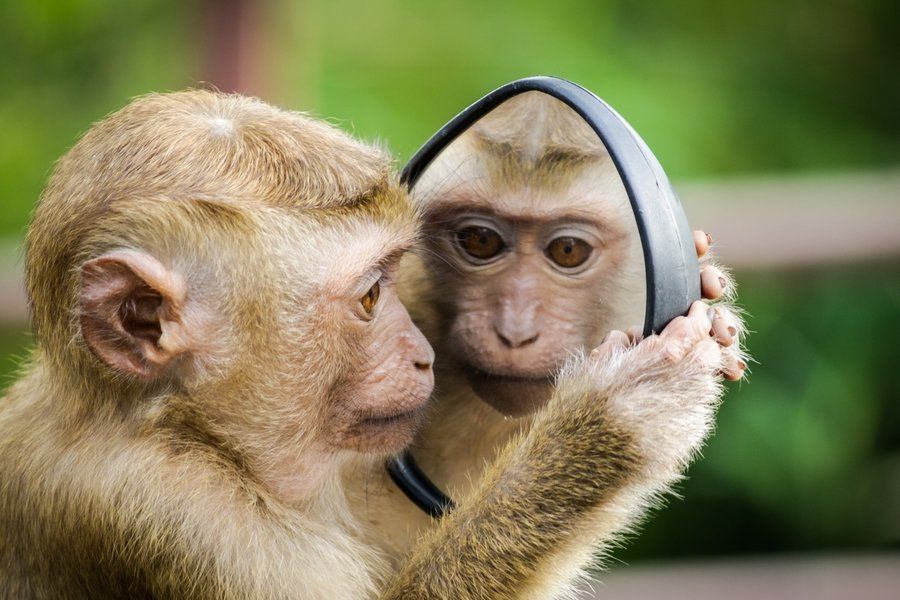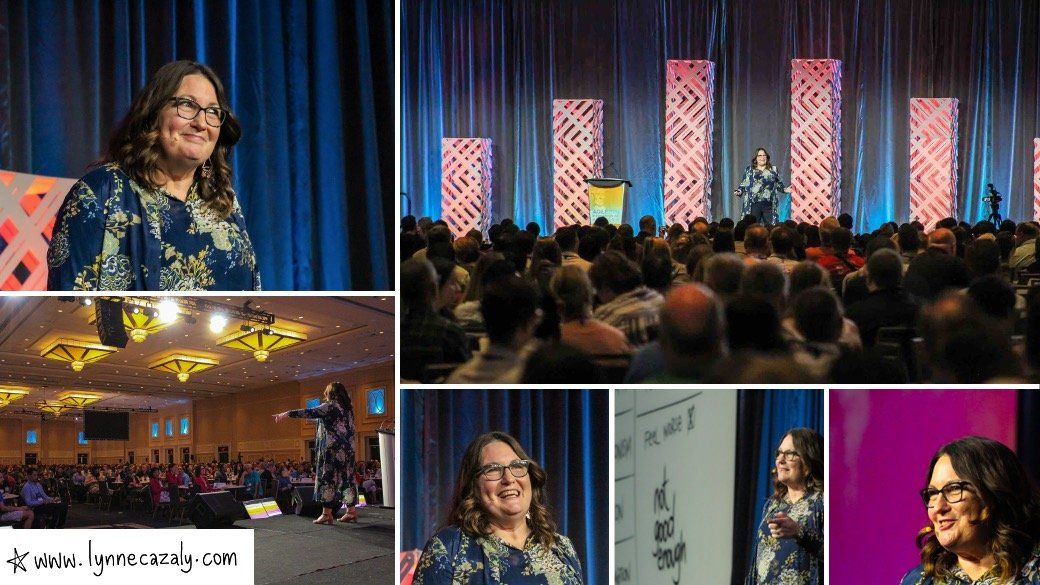Black-and-White Thinking? Or Shades of Grey?

“Has Avanttika started talking?”
“I hate working with her, such an incapable worker”.
The only connection I’m trying to make between the pretty random question and statement above is that they are both fully loaded, don’t you think?
For one, does it really matter to anyone if my 1.5-year old has achieved her language goals? If she had not, are we implying that she may have speech difficulties, thus making me feel a tad judged at being so nonchalant about it? Perhaps I should already speak to a therapist? Is peer comparison even right, or necessary at this age?
And for the other, to imply that the co-worker is utterly incapable would mean she does not get any job done and well, is she really that bad of a worker? Surely we do not intend to use such a strong word such as ‘hate’? Or maybe we do, but rarely with reasonable justifications and even then, hardly caring to substantiate our loaded comment about another person.
You get the drift.
The point I am trying to make is that we live in a very black-and-white world.
Black-and-white thinking
Civilization has force-fitted us into standard cognitive patterns and approaches that seemingly applies to everyone. This one-size-fits-all outlook has neatly divided the world into good against evil, yes against no, right against wrong, and that makes it easy for us to separate all things and all people the way we separate laundry, from linens and silks to colours and whites.
Is it really that simple though?
Paradoxically, everything about leadership, and parenting for that matter, is situational. And filled with various nuances. Many greys, many rainbows, plenty of sunshine, occasional thunderstorms.
Avanttika ‘exerting her leadership skills’ on Luna, their 6-year-old Lab-Retriever
My toddler, Avanttika may only now be starting to string individual words together while her little best mate belts out the full version of Baby Shark. Parenting experts and speech therapists may already have perfectly crafted childhood growth and development charts and diagrams to help me evaluate how well Avanttika is doing for herself, but here’s what we parents so sorely miss – these charts and diagrams are merely a point of reference and while they do help trigger the necessary course of action to help the child, they are never as black-and-white as they seem to be.
This might interest you: Why Fast-Tracking Your Child Doesn’t Work
Likewise, most of us are able to share ample experiences of being subjected to an unappealing colleague who just makes work miserable for us. We seem too quick to grant them a label and subject them to the ‘bad people’ side of the world. How unfortunate and sad this is, as we don’t let ourselves see people for what they are: normal, imperfect mortals just like us.
In reality, most of us fall somewhere in between the spectrum of both good and bad qualities – while this is a widely acknowledged fact, black-and-white thinking prevents us from accepting this normalcy in human imperfections and we often find ourselves in stressful relationships with people. I struggle as well, human that I am.

Our leaders in organisations, in political parties, in states, countries and in the world subject people to a very raw form of binary thinking: they are either this or that; superior or inferior; friends or enemies; of a lower or upper caste; intelligent or stupid. Have we ever wondered why these leaders are very reliant on each of us playing our ‘role’ in this world, whether we so chose to accept that role or not?
Apart from making life easier and maintaining a sense of order and decorum in the management of the world, I see minimal virtue in approaching people and life this way. Perhaps our lenses are on a self-fulfilling prophecy that chooses to disregard complexities such as is of life and would rather box things into easy binary terms.
It’s far easier to find something irritating about someone, hate them for it, and banish them into the ‘I’m so done with you’ category, both in our minds and in their existence. Far more challenging to dwell deeper into their intricate personalities, mull over theirs WHYs, help them see ours and build a rich, satisfying relationship with them.
Shades of grey
Binary terms are cognitive distortions that help us deal with life but unfortunately robs us of much of the complexities that makes life interesting and fulfilling. Black and white thinking also fed its way through most of my responsibilities as a person, as a wife, daughter, colleague and worker.
Until I became a mother in 2018.
Up till then, black and white thinking gave me a degree of security. I wanted to think that I had all the answers. Decision-making and compartmentalising was second-nature – after all, there is a right and wrong for everything. Guided by my conventional upbringing and prematurely minted sense of belief and self-virtues. I know what I know, or so I thought.
Read also: 8 Things Motherhood Taught Me About Leadership
I became a mother to a precious baby girl on the beautiful 23rd day of April, 2018 and struggling as I am to write this, ever since her arrival, my then-infant and now-boisterous toddler has consistently put me in a battle of inner turmoil.
One where lo and behold, there is a possibility that I could have made mistakes. It seems that perfectionism as a disease threatened to eat its way into motherhood where I assume I can never go wrong as a mother, preferring to subject my child to a list of ‘do’s and don’ts’ that will keep her safe, sane and thus received favourably in this world.

Mum Ashvaani with her adorable daughter, Avanttika
Not only does binary thinking show little appreciation for the world of grey, it has even less for the concept of self-reflection. I am challenged daily with a sense of black and white in parenting my child and for some time, I followed the masses, never subjecting Avanttika as the beautiful nuance that she was born to be and who was demanding that I see light from her perspective.
She wronged where I was dead-on, she went where I said no, she utterly failed many of the so-called measurements that were the yardstick of her growth and made me worry sick about whether I was doing her right, as her mother.
While black-and-white thinking gave me a sense of righteousness, it tactlessly cut me off so badly from being the kind of mother, wife and individual that I was compelled to be.
And so my personal challenge this year was to remove the lenses blocking my vision and accept the various degrees of sunlight into my life. I am trying each day to open myself up to more nuanced ways to describe people and situations. I am taking pauses, not just to think grey but to challenge myself to fully embrace various shades of grey.

That is what leadership, both in motherhood and in the workplace means to me. Do I have a set of do’s and don’ts? Yes I do. But I am also wiser to know that they will not always be favourable to me. Much less favourable to everyone around me.
If one voice perpetually lingers in your mind as we bring 2019 to a close, can I invite you to think about all sides? There is a dark and a bad, but there will also always be a light and there will eternally be a good. And then there are the in-betweens, the acceptable, the middle and the doable.
I hope you reflect on how much grey you allow in 2020 and I hope you trust your own intelligence to question every one of them in your personal and professional leadership journey. Lead your home-and-work troops to seek more than one, or two for that matter. Duality, dichotomy and binary thinking – they are all inescapable human qualities and I hope 2020 puts you on an adventure to explore them all.
You may be interested in: How My Grandmother Conquered Stereotypes
These days Ashvaani Ramanathan seems to be spending a majority of her time chasing, being chased, empowering, protecting, dictating, playing and retreating. All with her toddler, that is. She believes that great leadership does not run too far and aspires to be agile and nimble as she balances between being a mother, wife, daughter, colleague and worker. To connect with her, email us at editor@leaderonomics.com.
Personal
This article is published by the editors of Leaderonomics.com with the consent of the guest author.






